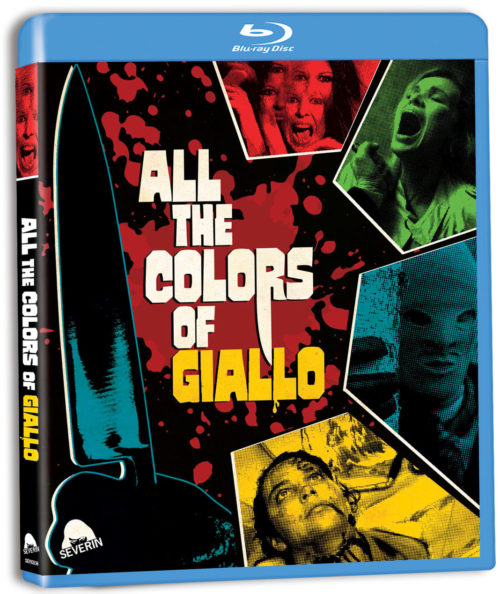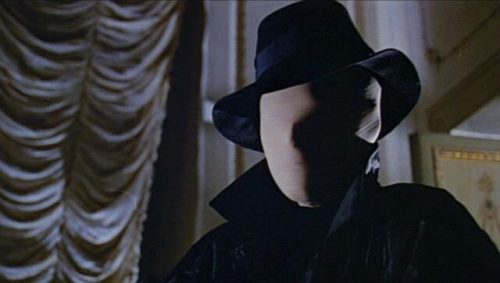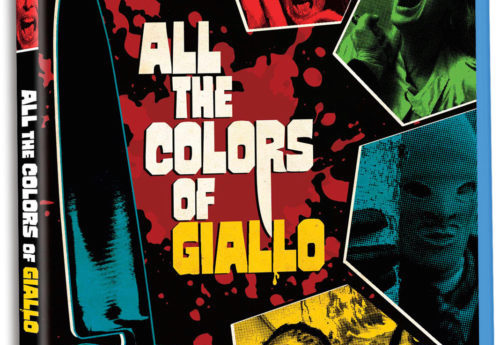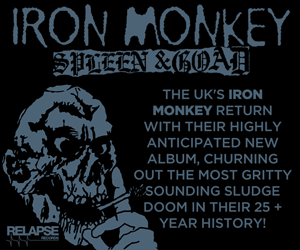All the Colors of Giallo: Blood, Sex, the Occult, and Heaping Loads of 70’s Weirdness
What is a Giallo? Basically, it’s a type of Italian thriller, a movie concerned with crime and violence and, most of all, murder. They were a highly stylistic kind of film that had their heyday in the early 70’s, but many were produced before then and after, as well. Some would consider them a subgenre of horror, others would not. I am pretty firmly in the horror camp and I would argue for my position because of the violence and sadism involved in most of the films. Think of the Giallo as an early, or proto form of the slasher, and you’ll get the right idea. In fact, the slasher stole many ideas from the Giallo (including whole murders—I’m looking at you, Friday the 13th Part 2), from nudity to the “body count” to the oft-used Killer POV.
Giallo means “yellow” in Italian and they were given this slang identification because of their inspiration from pulpy publications of murder mysteries by Poe, Edgar Wallace, and Agatha Christie. These versions all had yellow covers and were extremely popular when they were released, and calling them “Giallo” became a short-hand way of referring to a certain kind of thriller. This moniker extended to the films that purported to be inspired by these editions, and thus “Giallo” became the name of a movement.
Severin has released a set dedicated to the Giallo genre that’s pretty damned incredible. It consists of two releases: a documentary and collection called “All the Colors of Giallo,” and the film “All the Colors of the Dark”. Below will be a review of both. If you’re a fan of Giallo, or if you’re simply interested in exploring something new, then let me say right off the bat: these two releases are essential viewings.
All the Colors of Giallo

This could be considered a “supplements” collection and I guess in a way it kind of is, but this damned thing is packed with so much information and goodness that it rightfully deserves a separate release of its own. I obtained the 3-disc collection which includes several documentaries and a soundtrack CD. So let’s go through each disc.
Disc One:
This is the main one, the Big Kahuna of the set. Included here is the Daddy Documentary “All the Colors of Giallo” by Federico Caddeo (indeed, he directs all the supplements on this disc and “All the Colors of the Dark”, as well); “Giallothon,” a four hour (!) collection of Giallo trailers; and “The Giallo Frames,” an interview with John Martin, editor of The Giallo Pages.
“All the Colors of Giallo” is a wonderfully deep and intense dive into the history of the Giallo, covering mostly the period from “The Girl Who Knew Too Much” by Mario Bava up until “Tenebrae” by Dario Argento. Indeed, the main discourse of this film and the “Giallothon” is that these are the Golden Years of the Giallo, framed mostly between “Bird With the Crystal Plumage” and “Tenebrae,” both by Argento. And if I had one complaint, it would be that the movies after this are not really discussed much or given any kind of attention. I suppose we could consider films like “Opera” and “Trauma” by Argento, as well as “Stage Fright” by Michele Soavi as “Neo Giallo,” along with numerous other films that follow the rugged form of the genre, and perhaps they deserve a documentary of their own. It’s not fair to judge this work by what it doesn’t have, because it’s really quite clear Caddeo is aiming to explore the most fertile and explosive period of this genre expression, and he does so quite well. This doc goes in-depth, following the lead creators on a journey through the development and refining of the Giallo, given birth by Bava with “The Girl Who Knew Too Much,” shaped into its coming form by Bava with “Blood and Black Lace,” and finally birthing into the world in its most popular form with Argento’s “Bird With the Crystal Plumage.” Nearly every Giallo comes from these two great masters, and from there on, with these films as reference points, the documentary examines the major directors who refined these visions. We get good chunks on masters like Sergio Martino, Umberto Lenzi, and yes, Lucio Fulci. Fresh interviews with each of these subjects (minus Fulci, who has long-since passed) adds another layer of understanding and warmth to the proceedings. Each of these filmmakers are proud of what they’ve accomplished, and they damned well should be. This documentary serves as both an excellent introduction to the genre of Giallo as well as providing some deep dives that you don’t normally get anywhere else. Plus, I loved the vintage interview segments with Fulci, who shows himself to be a very thoughtful, lyrical, and cynical filmmaker, something that may not be apparent given his cruder, blunter horror films from later in his career (movies I absolutely adore, by the way).
“Giallothon” is a massive chunk, four hours of pure Giallo trailers. There’s two options to watch this by, one of which is the trailers as a whole or accessing them one by one, and the other is watching the whole with commentary by Kat Ellinger, author of the amazing All the Colors of Sergio Martino. I chose the latter and let me tell you, if you’re going to dive into this feature, this is absolutely the way to go. Ellinger is not only a scholar on the subject of Giallo, she is easy-going and highly entertaining. Her humor shines throughout, as does her enthusiasm. She gives us bits and pieces of information about each film here and does it in a concise and deep way that it never fails to inform and entertain at the same time. That’s hard to do, especially for over four hours (!). I broke my viewing up into two, two-hour chunks, and even with this I felt a bit like I was living a Giallo fever dream. This feature really does serve as another documentary of its own, though, following roughly the same guidelines of time as “All the Colors of Giallo” does, covering the period between 1963 and 1982, especially the most fertile ground in the early 70’s. Ellinger gives tidbits about each film, the directors, the stars, the setting, and what each film brought to the genre as a whole. And again, let me tell you, she has a wicked sense of humor. When she talked about one film going “Full Bush” I laughed out loud. Here’s someone that would be a lot of fun to have a movie marathon with. Also, she gives more service to later Giallo films not really covered in the documentary, which I greatly appreciated. Overall, this feature surprised me at how deep and brilliant it was. Do not skip this.
“The Giallo Frames”
Is a short, twenty minute interview with John Martin, the editor of The Giallo Pages magazine, and serves mostly as a synopsis of the Giallo as a genre, covering all the same ground as the feature documentary. In fact, this feels more like a book report summation of the genre, much like the summary of the plot on the back of a novel. The best part of this is the last few minutes, where Martin delves into the reasons that the Giallo faded, as well as almost the entirety of genre filmmaking in Italy. He blames it on the cutting of purse strings and the deregulation of the television industry. In short, people weren’t paying to make movies, and people weren’t paying to watch movies; so movies stopped getting made. Martin is genial and informative and the best way to experience this, I think, is to watch it as an introduction to the feature film.
Disc Two:
“Kriminal!”
Pretty much, this is a trailer compilation of krimi films, running about an hour in length. It’s fun and strange and weird and a good thing to have running in the background if you’re busy around the house and wanting something a bit offbeat playing behind you. That’s not to diminish this feature, because it really showcases a lot of cool films I would like to track down, but it’s not something that you’d go back to time and again to study (unless you’re a student of trailers, in which case, dig in).
“The Case of the Krimi”
Is an interview with film historian Marcus Stiglegger. He explains the origins of the German film genre, the Krimi, and also how it relates to the later rise of the Giallo. These two are what I would call kissing cousins, both influenced by mysteries and gothic stories by Poe and Agatha Christie, and most importantly, Edgar Wallace. The Krimi was popularized by a series of cheap, pulp paperbacks that were red in color (like in Italy, where the color was yellow). Krimis share many of the same seedy elements of the Giallo, minus the gaudy sleaze and violence. Stiglegger points out how the German films began to reflect their Italian cousins as the 60’s crept in, creating even more synergy between the two.
Disc Three:
Is the soundtrack compilation “The Strange Sounds of the Bloodstained Films” by Alfonso Carillo of Rendezvous! from the archives of Beat Records and remastered by Enrico De Gemini. There are 20 cuts contained here from various Giallo films. Included are examples by acknowledged masters of the form, Ennio Morricone, Riz Ortolani, and Bruno Nicolai, as well as other bits and spurts by lesser-known composers such as Roberto Pregadio and Francesco De Masi. You won’t find any kind of horror compositions here, although some of the tunes can be quite creepy. Mostly what you get is lounge-jazz, early 70’s light rock and this may not sound very scary, but that’s okay, because just like the films themselves, the music is soaked in the 1970’s and comes across as sunbaked and acid-fried, but with a layer of dark menace and scintillating fear. It’s the equivalent of drinking a martini and rocking out while wearing flared jeans and big collars, all while a black-gloved killer is lurking outside your door, waiting to come in and slit your throat. There is no Goblin here, and that’s perfectly fine. Their music is justifiably celebrated elsewhere. With this compilation, you get the chance to experience some of the other composers of the era and hear the unique way they used the music of the time to create that extra bit of tension and frisson to accompany the remarkable and stylish cinema that is Giallo. Carillo put together an excellent compilation here and it’s highly recommended.
In the end, this is an superb package Severin has put together. It’s the most thorough exploration of the Giallo as a genre, with lots of in-depth examinations and recommendations. My only quibble is that I would have liked a feature on the Spanish Giallo movement, as well as more on latter-day Giallo by Michele Soavi and Helene Cattet and Bruno Forzani. But that’s just me nitpicking because honestly, this is the place to start and then deep-dive when it comes to the magnificent body of work known as the Giallo. Severin has gone beyond the call of duty here, really lavishing fans with an essential documentary as well as hours and hours of in-depth material to sift through and enjoy. If you’re curious about this Italian art form, you can’t find a better place to start.
“All the Colors of the Dark”
A film by Sergio Martino, one of the great auteurs of Giallo, finally seeing a proper Blu Ray release here in the U.S., is a striking example of just how amazing this genre can be. The film follows the story of Jane (played by the unbelievably beautiful Edwige Fenech), a young woman who has just lost her unborn child in a car accident. She is plagued by nightmares that reflect this trauma and the long-ago murder of her mother. Her lover (played by Martino mainstay George Hilton) has been frozen out of their bed and keeps himself busy with his business, so he is frequently gone for long periods of time, but he never wavers in his devotion towards Jane. Along comes a new neighbor who offers her friendship in this time of trouble, and Jane quickly grafts onto her. It seems Jane is seeing a blue-eyed man from her dreams, the one she thinks is responsible for killing her mother. The man is stalking her in real life, or is he? Is Jane just cracking up, or is the threat real? Add to this the complexity of Jane being drawn into a Satanic cult (!) due to her neighbor’s influence, and things start to get really weird.
“All the Colors” is a wild film, propelled by an amazing score by Bruno Nicolai, incredible cinematography, delirious and bizarre hallucinatory passages, fine acting by Fenech and Hilton and all on board, an oppressive sense of dread, as well as atmospheric settings in London and terse editing. The story is convoluted and the payoff turns out to be rather bland (as is the case with most Giallo), but it’s the journey, not the destination, and this film takes you on a wild, sensual ride that includes a bizarre orgy, strange occult rites, blood, nudity, a bit more blood, and deep paranoia. In other words, this one has it all and it delivers the goods. I would say “All the Colors” is one of the five finest Giallo ever made and if you were going to jump into the genre anywhere, it might as well be here. You’re in the (gloved) hands of a master in Martino as his direction is assured, measured, and always moving forward, with many delicate and surreal touches. One minute you’re staring into the dreamy eyes of Fenech, the next you’re seeing blood squeezed from a dead dog’s throat into a goblet as part of a satanic ceremony. If that doesn’t appeal to you, this isn’t your cup of tea.
Lots of supplements on here. Let’s try to go through them quickly.
“Color My Nightmare”
Is an interview with director Sergio Martino, about half an hour long, where he waxes on about his career. It’s a genial interview and he comes across as a very charming man. There’s some ego there but hey, give the man his due. He tells many stories about the filming of “All the Colors”, each of them informative and enlightening. My favorite was the shocker that he didn’t want Fenech as the leading lady. He preferred a thinner woman, blonde, to better portray the neurotic nature of the main character. His brother, producer Luciano Martino, convinced him otherwise, and Sergio agrees that he made the right choice. He also makes several remarks about how much Rosemary’s Baby influenced his movie (and it’s all right there, if you’re paying attention: the giving of drugs to the girlfriend by the boyfriend, the look of the apartment building where they live, the manipulation of a neighbor, the Satanic thing, etc.). Martino talks about his other films, mostly in relation to this one, and this short documentary gives us a nice, concise view into his artistic process.
“Last of the Mohicans”
Is an interview with screenwriter Ernesto Gastaldi, a man who was an almost single-handed Giallo industry of his own back in the day. He wrote dozens of screenplays for these unique Italian thrillers, as well as many other films of different genres. His interview is the most amiable on the disc. He speaks with childlike glee of his time as a screenwriter and his relationships with many different Italian luminaries. There are moments of pure joy and moments of sentimental sadness as he recalls friends who have passed away over the years. This one is probably my favorite of all the interviews. Gastaldi seems like a fun guy, full of joy and life, and he doesn’t take himself too seriously.
“Giallo is the Color”
Is a short doc intercutting interviews with star George Hilton and Italian horror expert Antonio Tentori. It’s an interesting feature, with Hilton telling stories of the old days, along with specific memories of “All the Colors”, and Tentori talking about the impact of this film and other Martino thrillers. The editing doesn’t quite work for me in that the two interviewees don’t really fit well together, but the information and entertainment alone makes up for this minor quibble of mine. Hilton as always is funny as hell and can somehow be self-aggrandizing and self-deprecating in the same breath. He’s charming, to say the least, and I could listen to him talk for hours. Tentori is a bit drier but he’s approaching this from a different perspective, and he packs in the info, managing somehow to illuminate more about this film and the Giallo than what we’ve gotten from all the other supplements on all the other discs, and that’s quite some feat.
“Audio Commentary with Kat Ellinger”
Is another feature on this disc, where we get to watch the film and listen to the author of All the Colors of Sergio Martino make her case as to why Martino is an under-loved filmmaker. She makes quite a case, too, covering a lot of ground, all the while still managing to give comments about the action on the screen, as well. Ellinger is deft with doling out the information and doing it in an entertaining way. Her sheer joy will win you over and then she’ll start piling on the facts to back her up. There is never a dull moment here, and this loving tribute to Martino examines the film and filmmaker, warts and all. Kudos to Ellinger on her fine work.
Also included on this disc is the alternate U.S. cut of “All the Colors” known as “They’re Coming to Get You.” It runs at 88 minutes, 7 minutes shorter than the Italian cut. There’s a lot of tiny differences between the two, but the main thrust is the changing of the narrative. The U.S. version maintains focus on the Satanic cult while the Italian one reveals it was all a plot to gain inheritance money. The “Coming to Get You” cut makes the subject lean more towards outright horror, while the Italian cut keeps things firmly in the world of the Giallo (although still pretty hallucinatory). Both versions are well-worth comparing and it is interesting to see how a few edits can change the focus of a film rather quickly and thoroughly, but I vastly prefer the Italian version.
Severin has done a bang-up job of finally bringing this film and the Giallo genre the respect and attention it deserves. This set of releases can serve as a great introduction to the Giallo and to the work of Sergio Martino, and at the same time it contains many new revelations to those who are already well-versed in these matters. In any case, loving tributes don’t get more loving, and stars Fenech and Hilton finally get the praise they deserve, and Martino is finally getting his due in the spotlight. Dive in and feast, because nothing tastes finer than “All the Colors of the Dark”.




